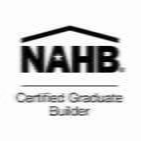Should you tell us your real budget? If you want a successful project, the answer is yes. Here’s why.
We occasionally meet homeowners who don’t want to reveal their true budget numbers. This lack of disclosure is not in their best interests and almost always sets the stage for disappointment.
Such reluctance is understandable, of course. Much of the online advice about hiring contractors treats the process as a poker game, with the contractor as the opponent. This mentality leads people to hold their cards close.
But the adversarial approach is the least effective one when planning a custom home. You’re not engaging in a one-time transaction; instead, you are partnering with a professional who will transform your design vision into reality. Success demands that you choose a builder in whom you have the trust to discuss how much you are prepared to invest. You can give a range rather than a hard number, but it needs to be realistic.
A reality-based budget is a crucial tool in the construction planning process. Most people have preconceived notions of what a home should cost, based on square-footage prices they have seen here and there. But these assumptions seldom support the designs and products they’re envisioning, and the result tends to be frustration. Putting your budget cards on the table is the only way the builder can paint an accurate picture of what is possible.
The best approach is to bring your design—whether it’s a full set of plans or just a rough concept—along with your product wishes and your budget to your trusted professional builder for a planning session. The builder will weigh these against your ability to pay. If there’s a gap, having complete information opens the door to finding creative solutions.
These solutions usually involve a bit of value engineering, which is a systematic approach to making intelligent tradeoffs that satisfy the homeowners’ priorities using the funds they already have.
Value engineering may include making a curved wall straight, altering the layout reducing square footage in a way that doesn’t take space from the rooms you consider most important, creating a plastered pantry closet instead of using custom cabinetry, and using standard asphalt shinges instead of the flashy shiny metal roof, are just the tip of the iceberg of savings.
The value engineering process can also include specifying less-costly finish products inside the home that, while not ideal, are easily upgraded later. For example, you can replace that $100 light fixture with the $1000 chandelier you want when you have the cash. Or you could opt for inexpensive carpet today and install hardwood floors in a couple of years. The builder will also ensure that you make the best choices today on items that aren’t easily upgraded, like cabinets and countertops.
This tradeoff process can go on until you have a set of plans and specifications that give you as much as possible of what you want without creating financial hardship.
The builder can’t do this creative work without an accurate budget. In other words, an honest discussion about money is a prerequisite to getting a result that will satisfy. But it all comes down to choosing a pro that you trust to be your partner.
Make it a great day!
David Baud CGR, CGB, CGP
Baud Builders, Inc.
PO Box 5708
Wakefield, RI 02880
(401) 789-1176 – Phone
(401) 789-2258 – Fax
david@baudbuilders.com
www.baudbuilders.com
Copyright 2017. All rights reserved.









